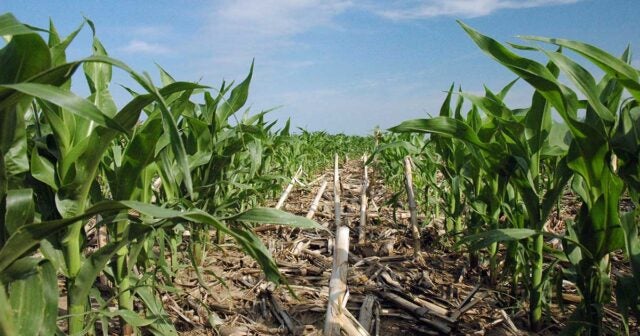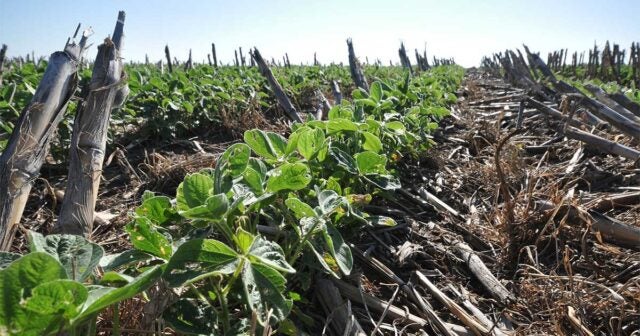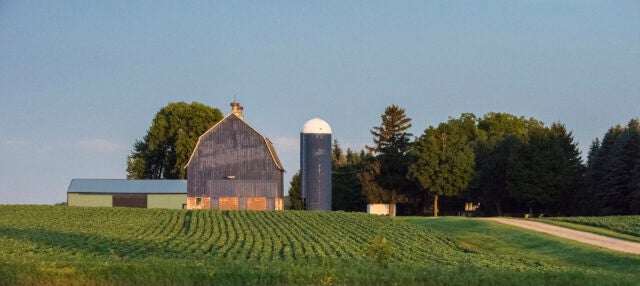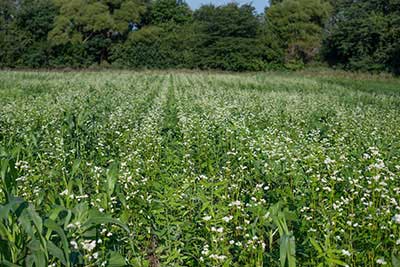- Resources
- What drives financial success in cover cropping? New insights from a three-year analysis of farm financial data
Resources
What drives financial success in cover cropping? New insights from a three-year analysis of farm financial data
Published: October 7, 2025 by Mai Lan Hoang
Cover crops offer many benefits to farms and local communities, including building soil health and improving water quality. However, for farmers to adopt cover crops at scale, the economic return must be clear and measurable. Farmers need reliable data on how cover crops impact their bottom line, especially as they currently face significant economic uncertainty.
To meet this critical need, Environmental Defense Fund and partners have released a report that provides farmers with clear, reliable data on the financial impacts of cover crops gathered from real Minnesota farm records spanning several growing seasons. For the first time, the report compiles multi-year financial outcomes to provide a comprehensive analysis of cover crop costs, returns and their effects on primary crops from 2022 to 2024.
These findings provide valuable insights on how farmers, their partners and conservation programs can improve the financial viability of cover crop adoption. Here are the key takeaways:
1. Strong cost management sets profitable fields apart.
In our analysis, the most profitable cover crop fields consistently had lower per-acre costs compared to low-profit fields in our analysis. The total direct cost of growing cover crops for a typical high-profit field was only about half the cost of low-profit fields.
The study found that cover crop seeds and machinery repairs were the key expenses driving the cost differences between high- and low-profit fields. The more profitable fields used cheaper cover crop seeds and had fewer machinery repairs.
2. Cost-share programs play an important role, but gaps remain.
Cost-share programs – including state, federal and private sector funds that offset a portion of farmers’ costs to plant cover crops – play a critical role in supporting profitable cover crop adoption. The most profitable cover crop fields in the analysis consistently used cost-share payments to offset the financial costs of using cover crops.
For producers who had access, cost-share payments covered more than half (54% on average) of total direct cover crop costs. Unfortunately, only 27% of farmers in our study received these payments since many of these programs only support farmers in the first few years of implementing conservation practices like cover cropping. This demonstrates a significant gap and underscores the ongoing need for broader access to cost-share support to help more farmers adopt cover crops successfully.
3. Generating revenue from cover crops drives financial profitability.
Cover crops are typically planted in the fall to reduce soil erosion, retain soil moisture and provide soil nutrients, among other benefits. In some cases, they can also generate revenue when harvested for seed sales or animal feed.
The three-year analysis found that rye silage, when harvested for livestock feed, was the only cover crop to generate a positive return for participating farmers – not including its financial impact on the following cash crop. Other cover crop types, including rye and cover crop mixes, did not produce direct revenue to offset their costs.
4. Timing matters: Cover crops pay off before corn, not soybeans.
Cover crops can influence the profitability of the following cash crops, which plays a key role in their overall economic impact. This is likely driven by improvements in soil health, moisture availability, and the overall timing and ease of planting the subsequent crop.
Our analysis found that corn fields planted after a cover crop were more profitable than the average field without cover crops in all three years of the study. Corn fields following a cover crop had lower per-acre expenses, including reduced fertilizer expenses, potentially from increased nutrient contributions from cover crop mixes.
Soybeans, however, showed a different trend: fields planted after cover crops were less profitable than the regional average soybean acre without cover crops. While farmers may still choose to plant cover crops before soybeans – for reasons such as erosion control – this study highlights that profitability can vary by crop. Considering this variability in adoption strategies can help farmers better balance their agronomic and financial goals.
Investing in farm financial data collection and analysis is critical to giving farmers the trusted insights they need to inform their conservation adoption decisions.
It’s clear that cover crop systems vary widely and are not simply a cost to the farming operation. Understanding the financial impacts of different species and implementation strategies is critical to farmers’ success.
Insights from financial data on conservation practices, such as cover cropping, can inform technical assistance and cost-share programs to enhance the financial viability of these practices, support sustainable implementation and maximize long-term soil health benefits. For example, organizations such as the Practical Farmers of Iowa and Precision Conservation Management include financial profitability information and education in their services to help farmers adopt conservation practices profitably. Embedding this approach into all technical assistance programs can increase the long-term economic sustainability of conservation practice adoption for farmers.
Public and private programs should also invest in expanding farm financial data collection and analysis efforts nationwide to aggregate cover crop financial data on a large scale. With additional investment, we can build technical capacity across more institutions, expand access to financial education and technical assistance, and ultimately help more farmers make sustainable investments in the resilience of their operations.
The economics of cover crops on Minnesota farms: Three-year trend analysis report (2022-2024)
This synthesis report evaluates data collected from 2022 to 2024 to examine trends in the financial impacts of cover crop implementation over time, focusing on a consistent group of 41 Minnesota farms that submitted data for all three years.
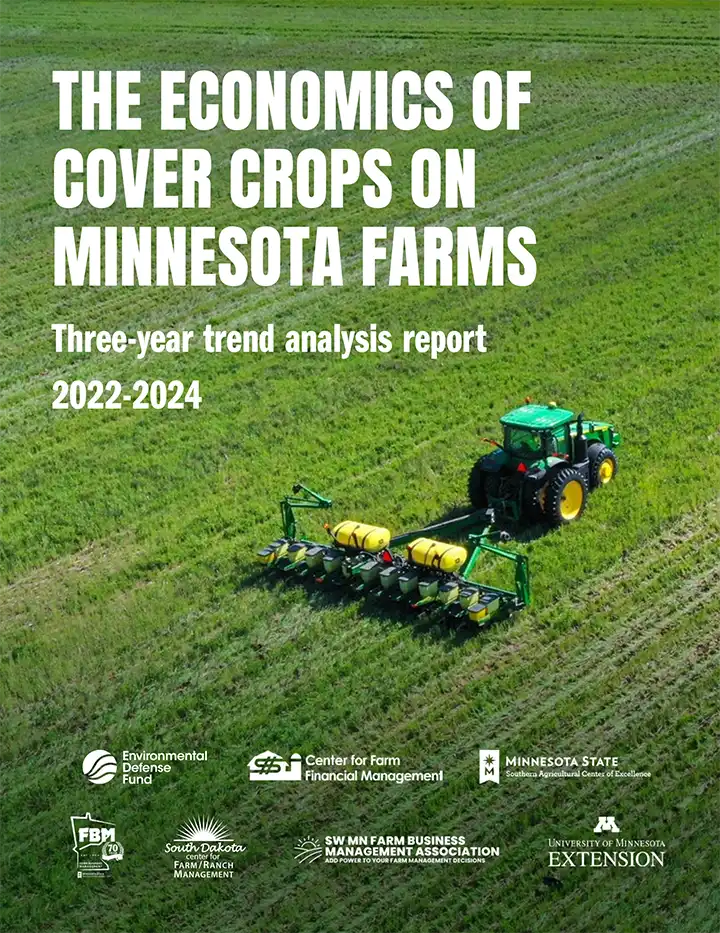
The economics of cover crops on Upper Midwest farms: 2024 data report
This report presents cover crop financial data from 124 farms across Minnesota, South Dakota and Wisconsin during the 2024 growing season, providing insights into the financial impacts of using cover crops.
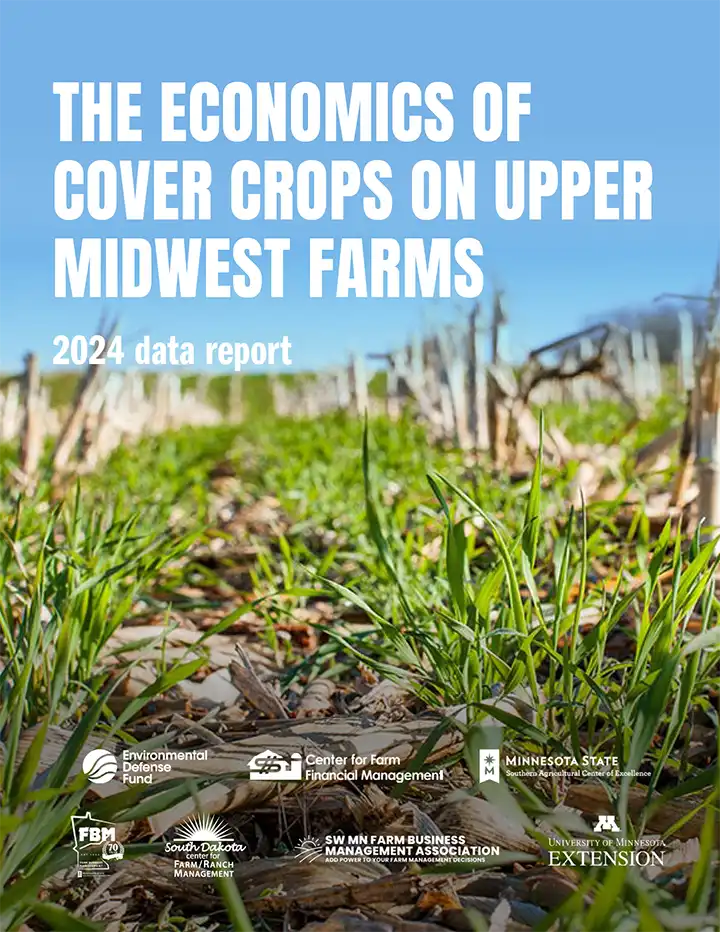
Our Experts
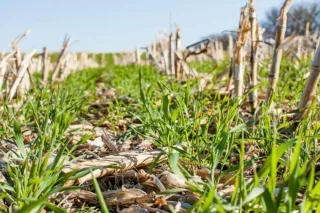
-
Financial Solutions for Agricultural ResilienceLearn More
-
Financial impacts of cover crops in Minnesota and WisconsinLearn More


